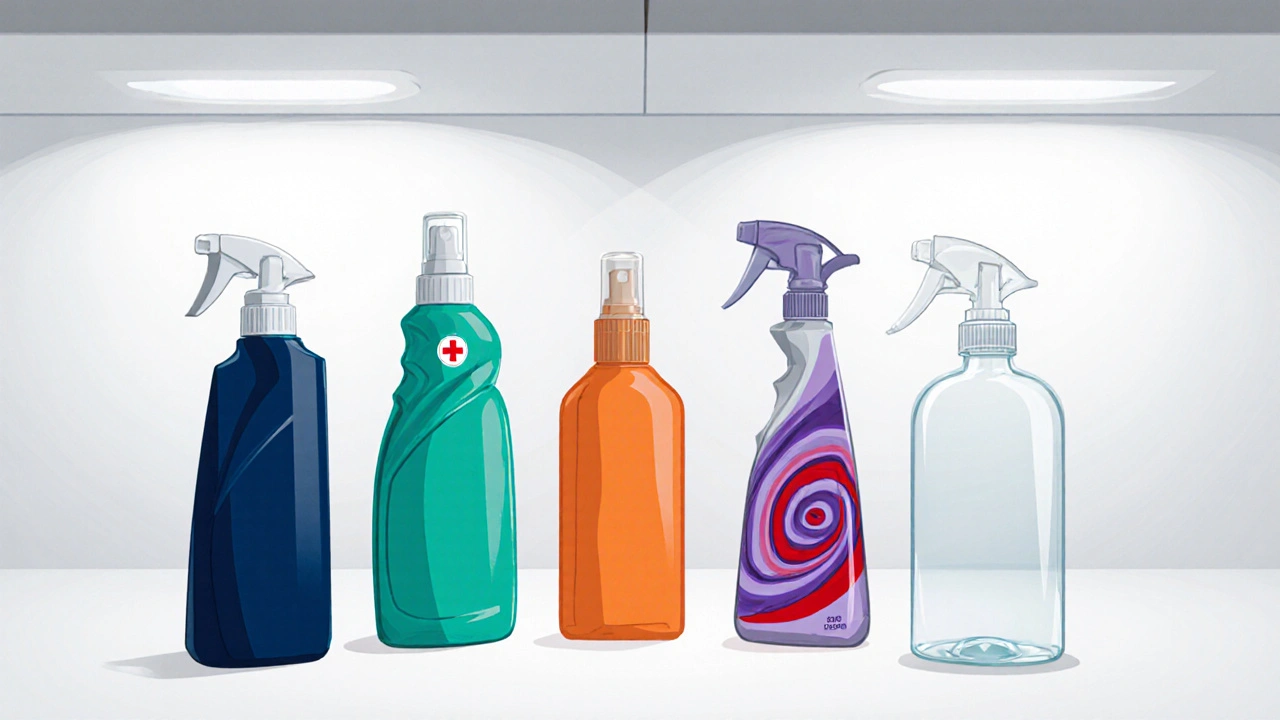Nasonex vs. Other Nasal Sprays Comparison Tool
Recommended Nasal Spray:
Allergic rhinitis can turn a simple day into endless sneezing, runny nose, and sleep loss. Choosing the right nasal spray feels like picking a needle from a haystack-there are prescription options, over‑the‑counter brands, and everything in between. This guide lines up the most popular sprays side by side, so you can see exactly where Nasonex comparison fits and decide what matches your symptoms, budget, and lifestyle.
Quick Takeaways
- Nasonex (mometasone furoate) is a prescription spray with a strong anti‑inflammatory effect and a low daily dose.
- Flonase (fluticasone propionate) and Rhinocort (budesonide) are OTC alternatives with similar efficacy but slightly higher dosing.
- Nasacort (triamcinolone acetonide) works fast for mild symptoms and is the most affordable OTC option.
- Dymista combines an antihistamine (azelastine) with a steroid for rapid relief, but it requires a prescription.
- Cost, onset speed, and prescription status are the three biggest decision drivers.
What Is Nasonex?
When treating allergic rhinitis, Nasonex is a prescription nasal spray that delivers mometasone furoate, a potent corticosteroid. The spray comes in a metered‑dose bottle, typically 50µg per spray, and most doctors prescribe one spray per nostril once daily. Because the steroid is delivered directly to inflamed nasal tissue, it reduces swelling, mucus production, and sneezing without the systemic side effects of oral steroids.
How Nasonex Works
Mometasone furoate binds to glucocorticoid receptors in the nasal mucosa, blocking the release of inflammatory mediators like histamine, leukotrienes, and cytokines. This action shrinks swollen blood vessels, lowers mucus secretion, and restores normal airflow. The drug’s high receptor affinity means a tiny amount does the job, which translates to a lower risk of nosebleeds or irritation compared with higher‑dose sprays.
Key Criteria for Choosing a Nasal Spray
Before we line up the alternatives, here’s the checklist most shoppers use:
- Efficacy: How well does the spray control symptoms after a few weeks of use?
- Onset speed: Do you feel relief within hours or does it take days?
- Prescription vs. OTC: Are you comfortable getting a doctor’s note?
- Dosage simplicity: One spray a day or multiple doses?
- Side‑effect profile: Risk of nosebleeds, throat irritation, or systemic absorption.
- Cost: Price per bottle in Canadian dollars, including insurance coverage.
Top Alternatives Side‑by‑Side
| Spray | Active Ingredient | Prescription? | Typical Onset | Daily Dose (µg) | Common Side Effects | Approx. Cost (CAD) |
|---|---|---|---|---|---|---|
| Nasonex | Mometasone furoate | Prescription | 3-5 days | 100 | Nosebleeds, throat irritation | $45-$55 (30‑spray bottle) |
| Flonase | Fluticasone propionate | OTC | 2-4 days | 110 | Nosebleeds, headache | $20-$30 (120‑spray bottle) |
| Rhinocort | Budesonide | OTC | 2-3 days | 64 | Throat irritation, taste alteration | $18-$25 (120‑spray bottle) |
| Nasacort | Triamcinolone acetonide | OTC | 1-2 days | 55 | Mild dryness, sore throat | $15-$22 (120‑spray bottle) |
| Dymista | Azelastine+Fluticasone | Prescription | 1 hour (antihistamine) + 3 days (steroid) | 137 (combined) | Burning, bitter taste | $55-$70 (60‑spray bottle) |
| Saline rinse | Salt water | OTC | Immediate | Variable | None | $5-$12 (pack) |
The table lays out the hard numbers; the narrative below puts them in context.

When Nasonex Outshines the Rest
If you need a nightly, once‑a‑day routine and you’re already covered by provincial drug plans, Nasonex shines. Its 100µg daily dose is the lowest among the steroid sprays, which means fewer reports of nosebleeds. The prescription barrier also guarantees that a clinician has evaluated your medical history-important if you have glaucoma, diabetes, or are pregnant.
When OTC Sprays Might Be a Better Fit
People who balk at a doctor visit or who prefer a lower price point often start with Flonase or Rhinocort. Flonase’s slightly higher dose (110µg) gives a marginally quicker reduction in congestion, and the OTC label means you can grab a bottle at any pharmacy. Rhinocort’s budesonide is gentle on the nasal lining, making it a solid choice for kids over six who can handle the spray technique.
Rapid Relief Scenarios: Nasacort and Dymista
When you need symptom relief within a day-think a weekend vacation or an important presentation-Nasacort’s quick onset (1-2days) and low cost make it a go‑to. If you also suffer from itchy eyes and a runny nose that won’t quit, Dymista’s antihistamine‑steroid combo delivers immediate antihistamine action, with the steroid kicking in for longer‑term control.
Practical Tips for Getting the Most Out of Any Nasal Spray
- Blow your nose gently before each dose to clear excess mucus.
- Tilt your head slightly forward-not back-so the spray lands on the nasal lining instead of the throat.
- Insert the nozzle, close one nostril with a finger, and breathe in slowly while pressing the pump.
- Repeat on the other side, then avoid sneezing or blowing your nose for at least 5minutes.
- Clean the tip with warm water weekly to prevent bacterial buildup.
Following these steps reduces irritation and ensures the medication reaches the target tissue.
Bottom Line: Picking the Right Spray for You
Think of the decision as a three‑part equation: symptom severity+desired speed of relief+budget/coverage. If you score high on severity and have prescription coverage, Nasonex is the logical pick. If you’re looking for a quick, cheap fix, Nasacort or a saline rinse might be enough. For combination allergy symptoms (nasal+eye), Dymista offers the most comprehensive approach, albeit at a higher price.
Frequently Asked Questions
Can I use Nasonex if I’m pregnant?
Pregnancy isn’t an automatic disqualifier, but you should discuss it with your OB‑GYN. The low systemic absorption of mometasone furoate is generally considered safe, yet a doctor will weigh the benefits against any potential risk.
How long does it take for Nasonex to start working?
Most users notice a reduction in congestion within 3‑5days of consistent daily use. Full anti‑inflammatory benefit can take up to two weeks.
Is it safe to switch from an OTC spray to Nasonex?
Yes, but do a short overlap‑free washout (about 24hours) to avoid excess steroid exposure. Talk to your pharmacist or physician to confirm the timing.
Can children use Nasonex?
Nasonex is approved for children 2years and older, but the dose is usually halved (50µg per day) for younger kids. Proper technique is crucial, so a caregiver should supervise the first few applications.
What should I do if I get frequent nosebleeds?
Stop the spray for a day, apply a saline rinse, and keep the nasal lining moist with a thin layer of petroleum jelly. If bleeding persists, consult a healthcare professional-maybe a lower‑dose spray like Nasacort is a better match.








